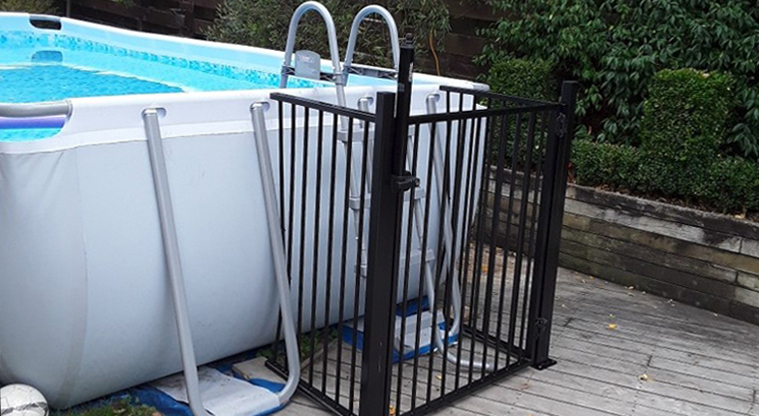How to restrict access to your pool
By law, all pools, including small heated pools (spas, hot tubs, etc), must have a barrier to prevent unsupervised access to the immediate pool area by children younger than five years old.
A pool barrier must restrict access to the pool from:
- the house
- other buildings
- vehicle or pedestrian access ways
- other areas of the property.
What is not allowed in your pool area
Non-pool related items and activities can not be located inside the pool area. These include:
- clothes lines
- play equipment
- vegetable gardens
- dog kennels
- general storage areas.
If we have your pool recorded as being empty, contact us for an inspection before you refill it.
Pool barrier safety checklist
Pool barriers:
- must restrict access to the pool and the immediate pool area
- must be at least 1.2m in height above the ground and any permanent projection (for example, steps, retaining walls, raised gardens, etc) or object placed on the ground outside and within 1.2m of the barrier
- must have no climbable features on the outside of the barrier (or adjoining barrier) that could be used for climbing unless they are spaced at least 900mm apart
- must not have any gaps that exceed 100mm in or under it, including pet doors
Trellis or mesh fencing around the pool:
- higher than 1.8m must have openings 35mm or less, or be fitted with a protective cover
- with height between 1.2m - 1.8m must have openings 10mm or less, or be fitted with a protective cover.
Ensure there are no trees that could assist young children climbing the fence.
For pools (including freestanding pools and swim spas), installed after 1 January 2017, removable ladders are not allowed unless they are enclosed by a complying barrier and gate.
See below for an example of a pool barrier around a ladder.

If your pool barrier features a building or boundary fence, see
Other structures used as part of the pool barrier.
Pool gate safety checklist
Gates into the pool area must:
- open away from the pool area
- self-close and self-latch unaided from any distance
- comply with the rules for fences.
The gate latch must be:
- a minimum of 1.5m above the ground and any objects within 1.2m of the barrier, if accessible from the outside of the barrier
- inaccessible from the outside except by reaching at least 1.2m if mounted on the inside of the gate
- for pools installed from 1 January 2017, if the latch is accessible only by reaching over the gate, it must be set at least 150mm from the top or be shielded.
If the latch is accessible only by reaching over the gate, it must be set at least 150mm from the top or be shielded.
Inspections for small heated pools (hot tubs and spa pools)
Your small heated pool does not need an inspection every three years if it meets the following criteria:
- a water surface area of 5 square metres or less
- 760mm high unclimbable sides (including no steps)
- a complying lockable lid, that must;
- be capable of supporting 20kg of weight at its centre
- have hold-down straps and fasteners capable of fixing the cover in place so there is no opening greater than 100mm
- fasteners should have a minimum main width of 33mm
- have a prominently displayed hazard warning notice - for example: "WARNING: This spa pool cover must be kept locked except when under adult supervision".
- be constructed with a slope from the centre to the outside to prevent water collecting on top.
Exemption from pool fencing requirements
Exemptions are no longer available but under the Building Act there is provision to apply for a waiver or modification as part of your building consent process.
